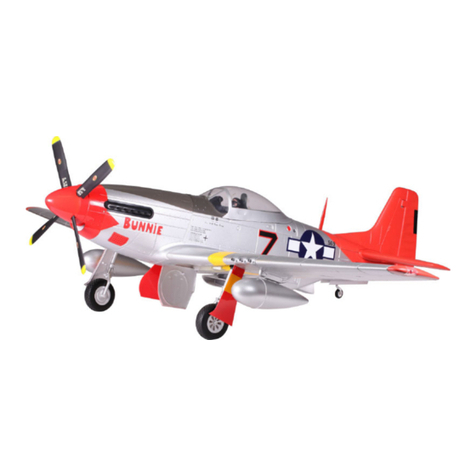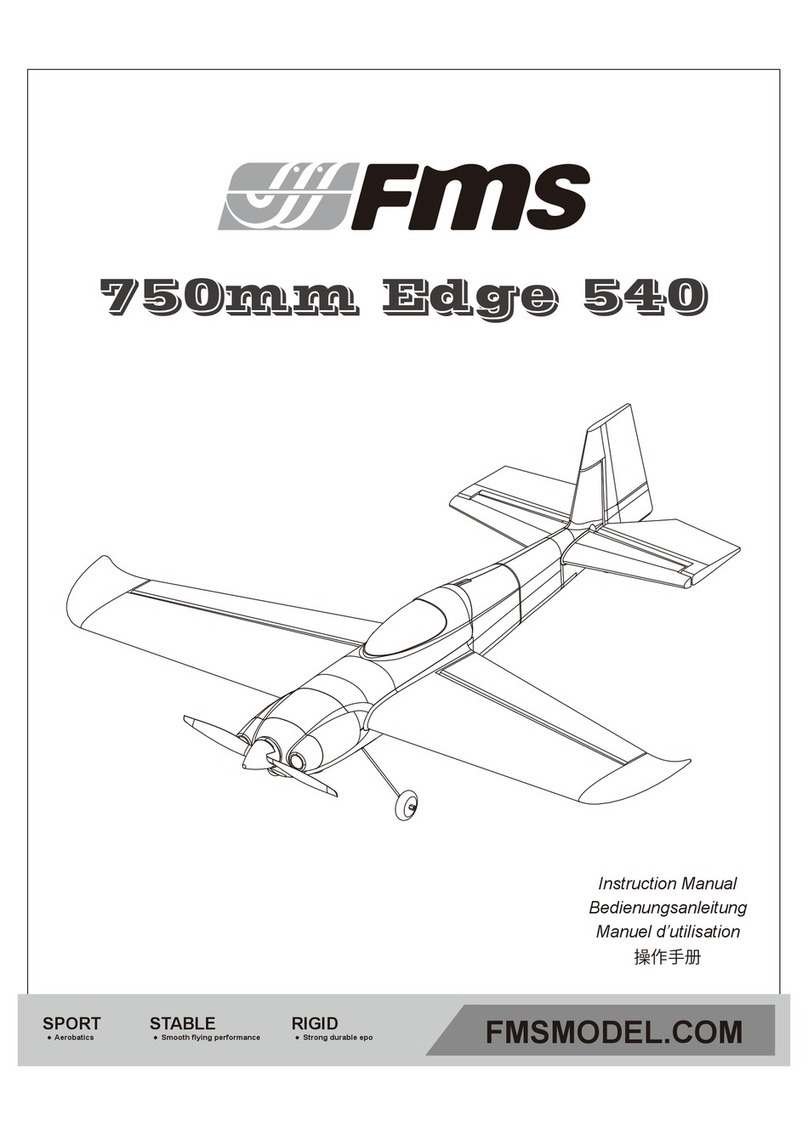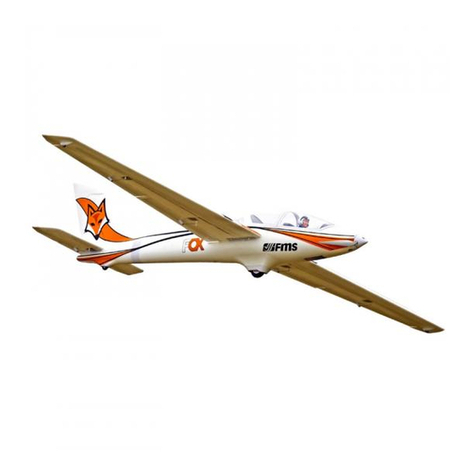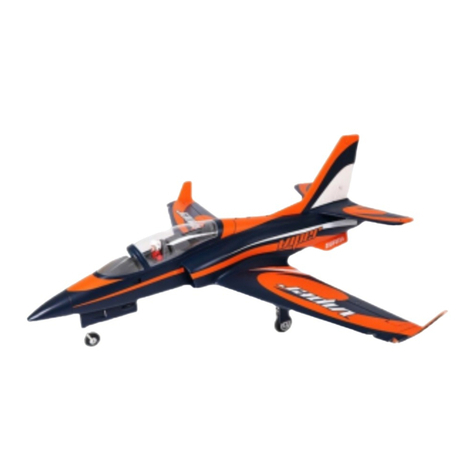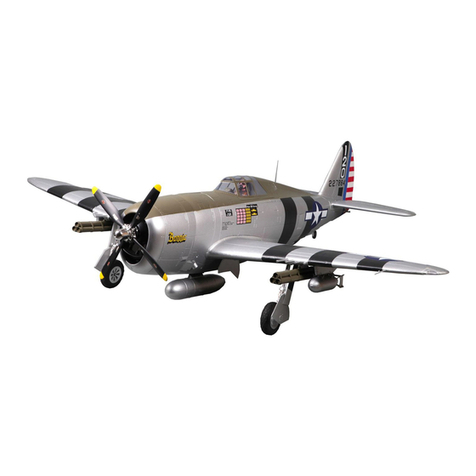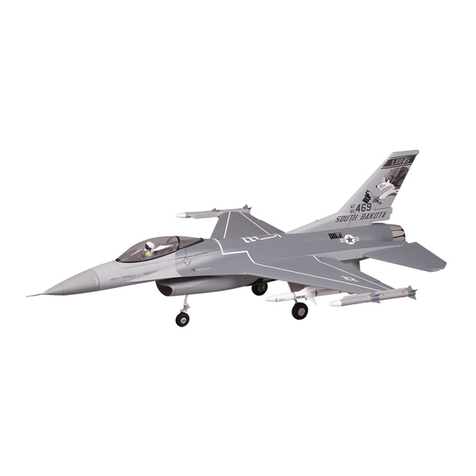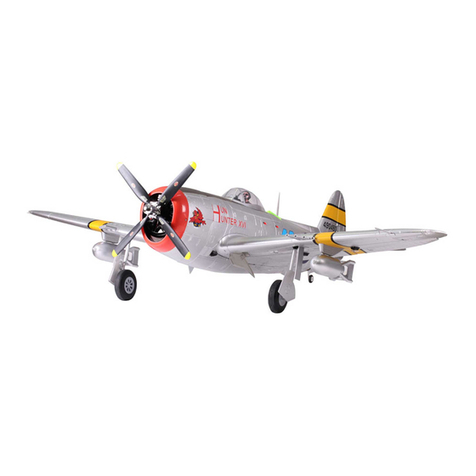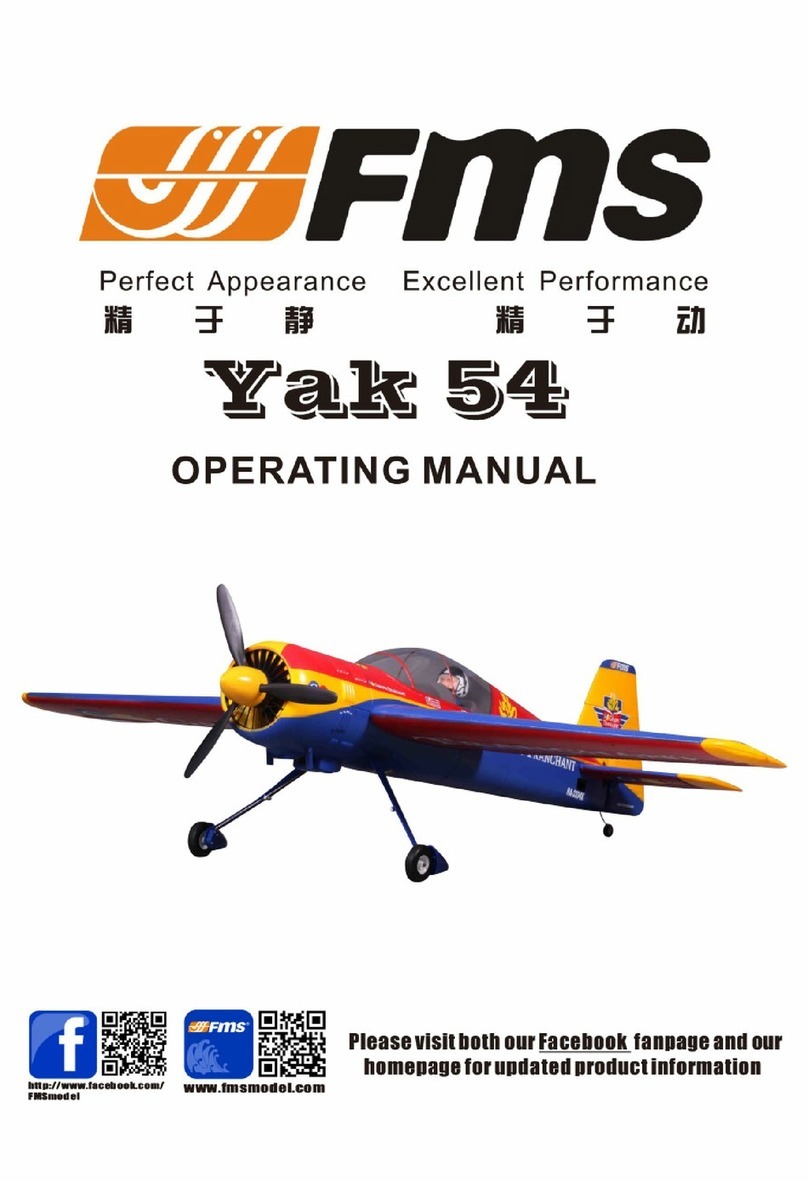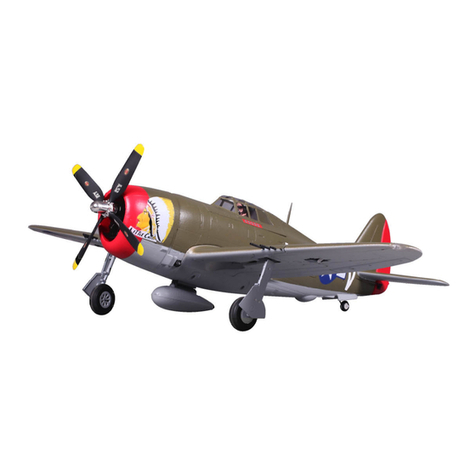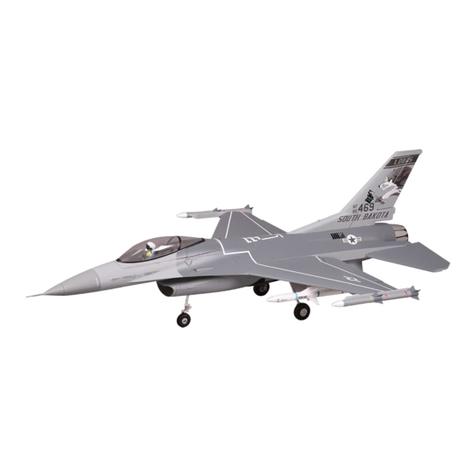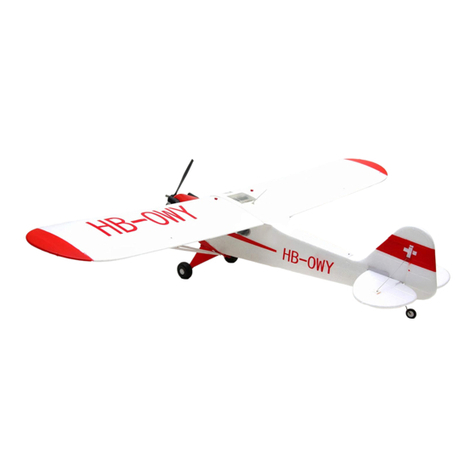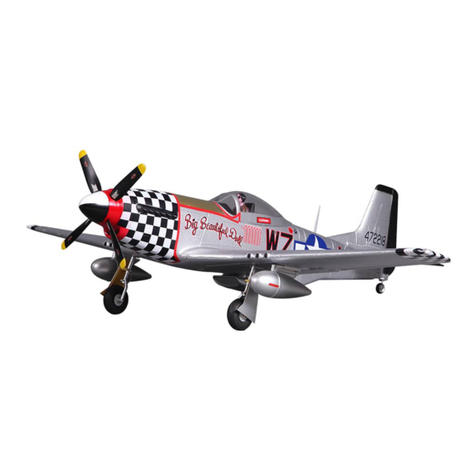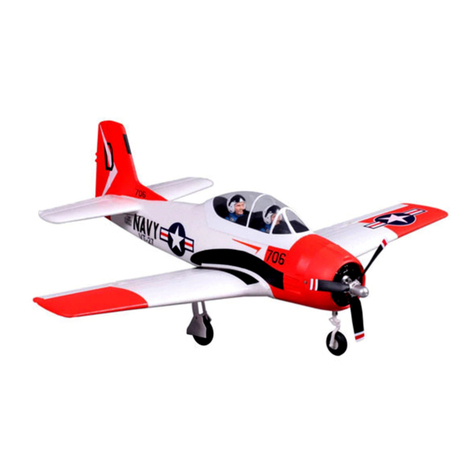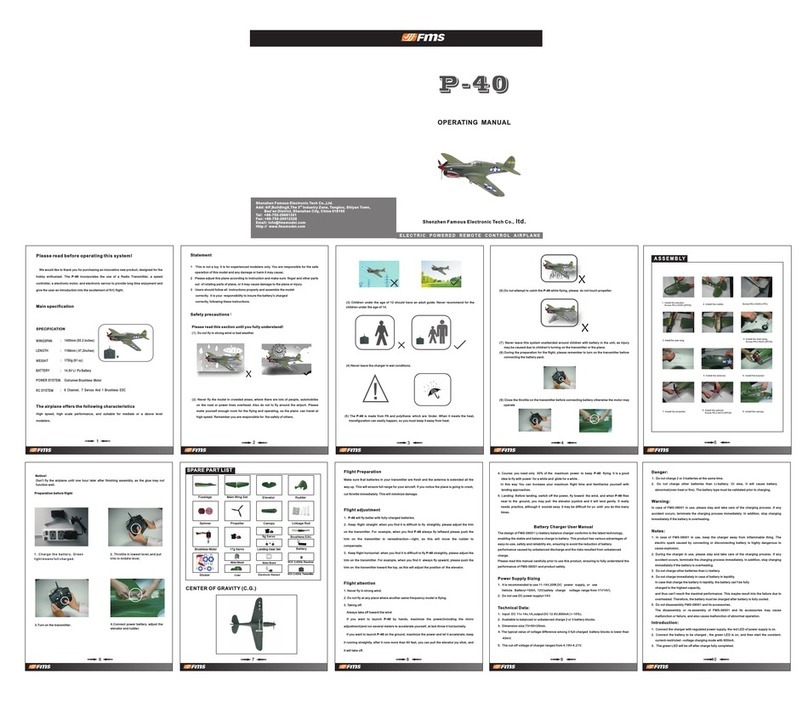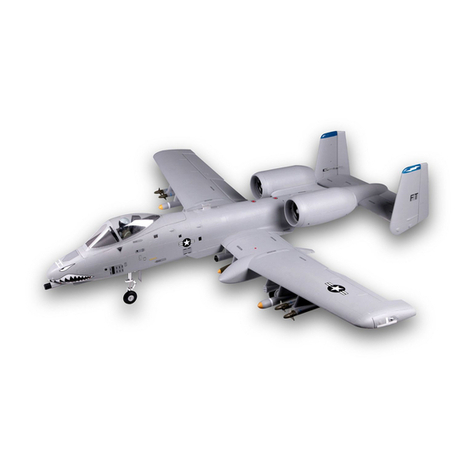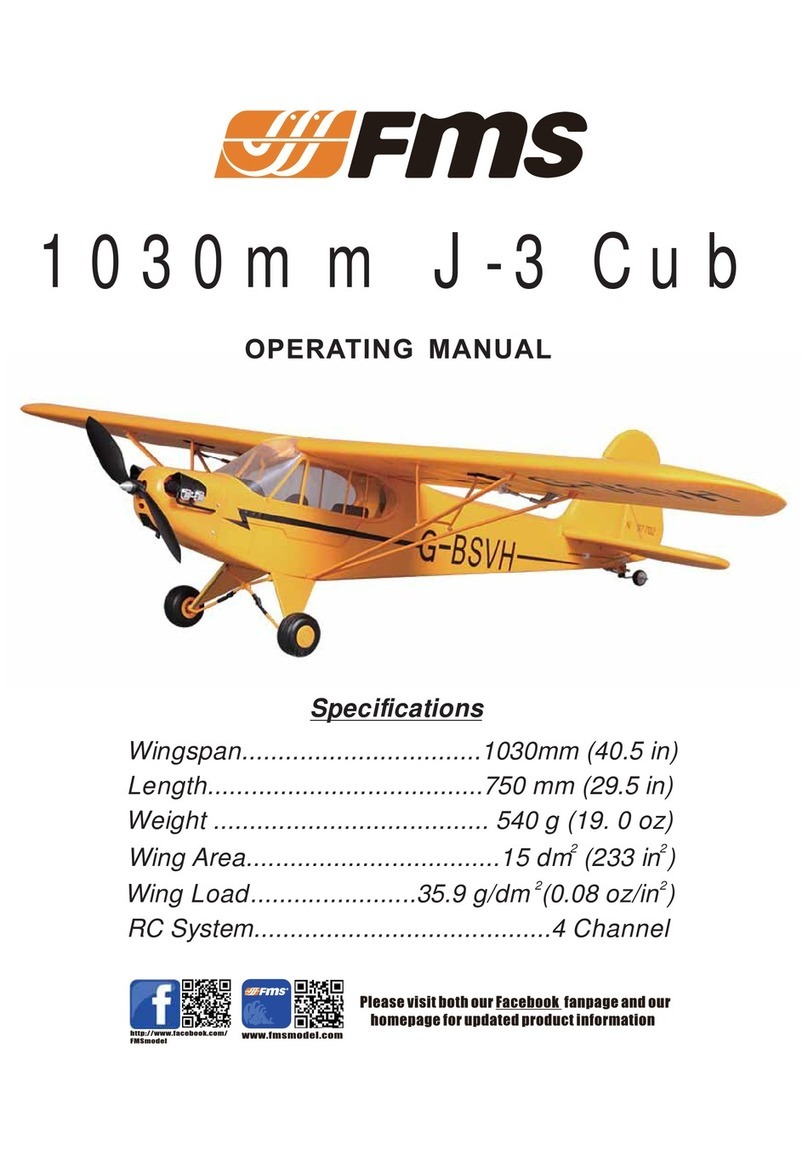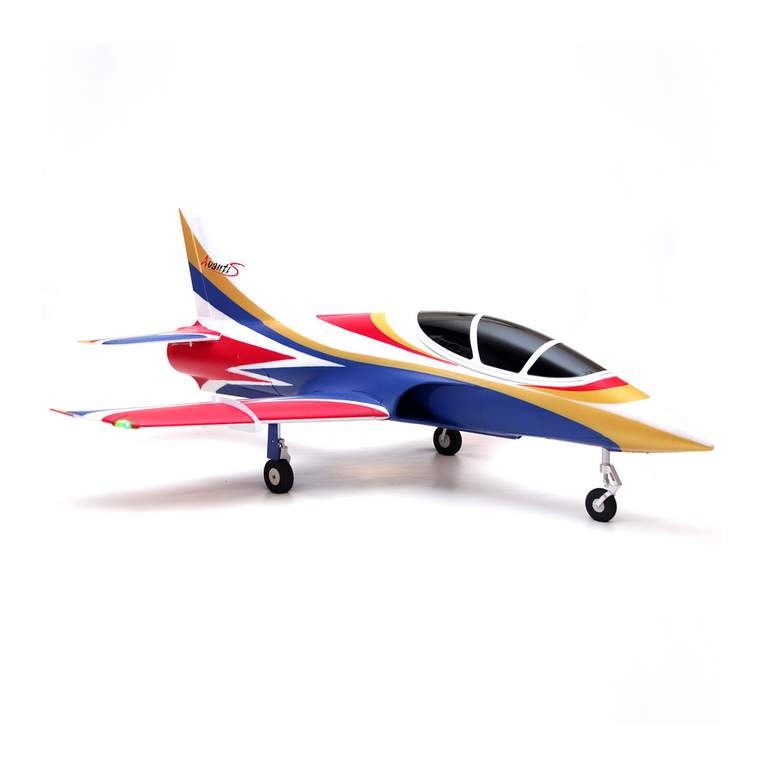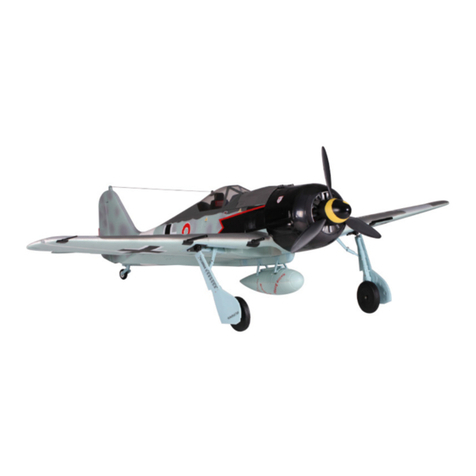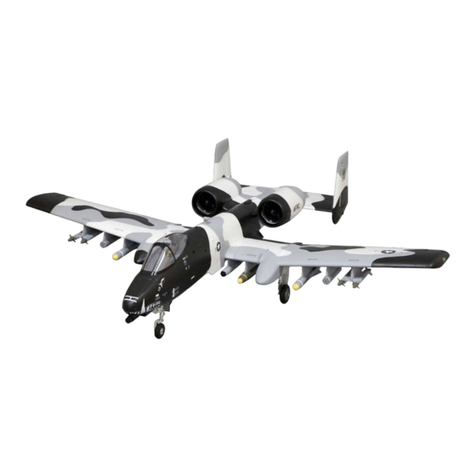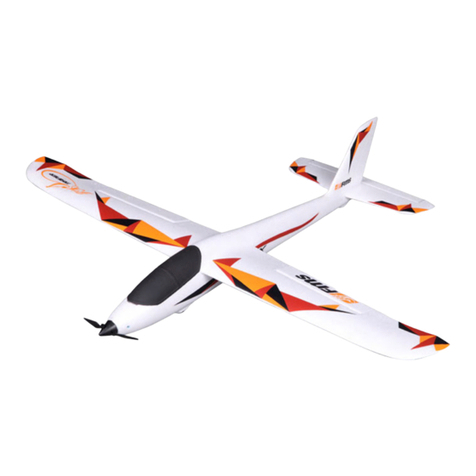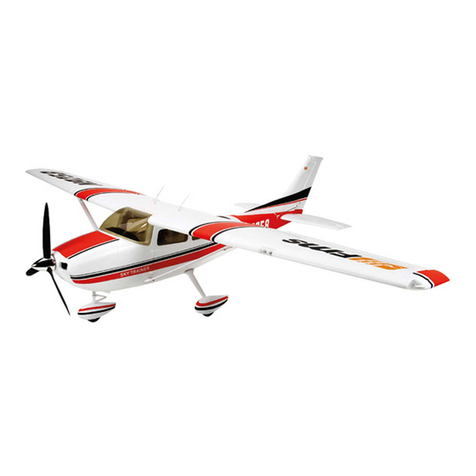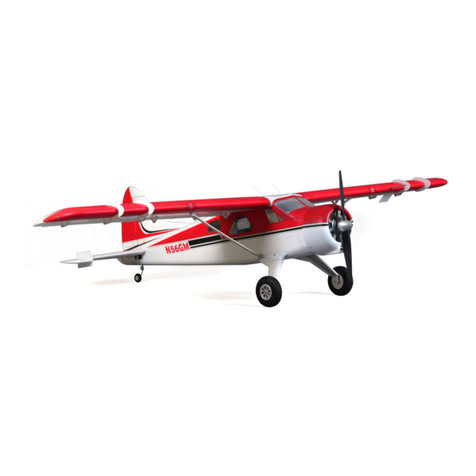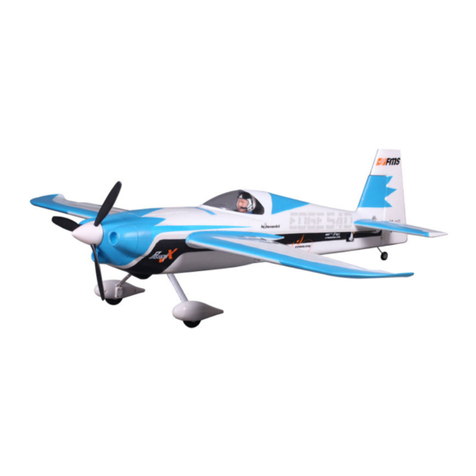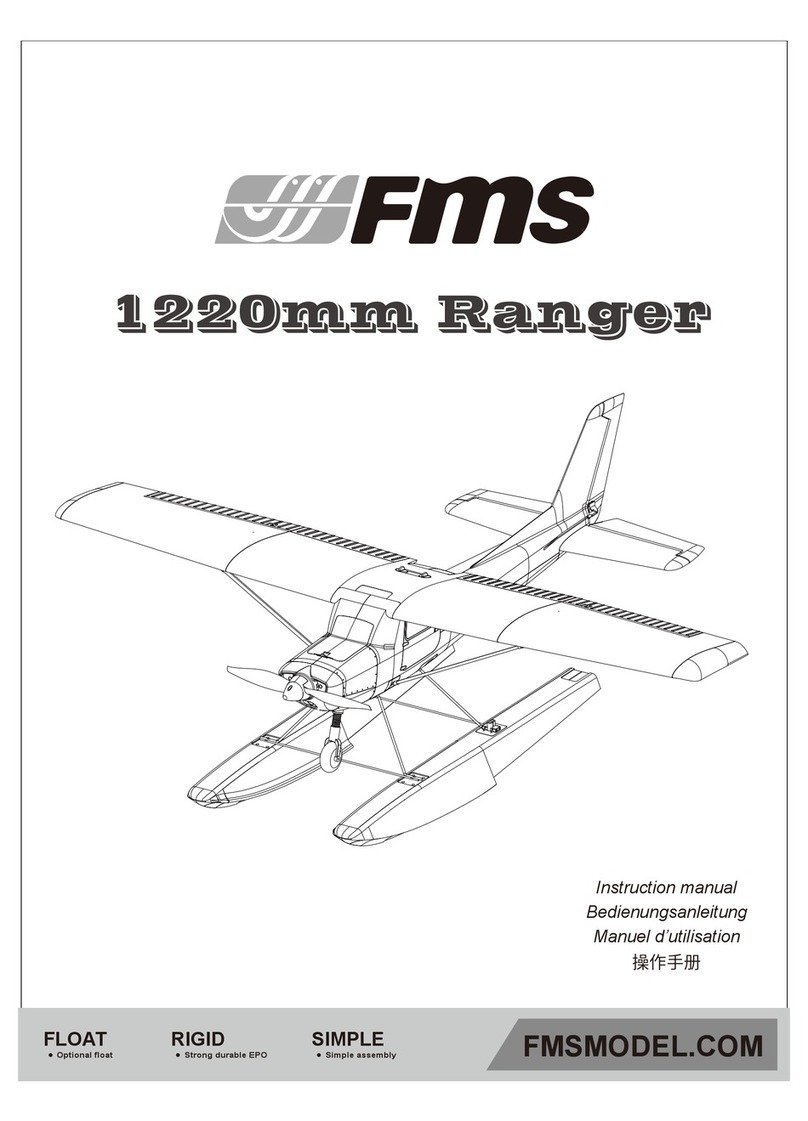
3
Wing span:1220mm /48in
Overall length: 1165mm /46in
Flying weight: ~ 3050g
Wing load:95.3 g/dm² ( 0.18oz/in²)
Wing area: 32dm² ( 495.8 sq.in)
Servo: 13gX8,9gX3
Recommended battery: 22.2V 4000mAh-5500mAh 45c
EN
Motor size: 3665-KV2000
ESC: 100A
Introduction
Before assembly, please inspect the contents of the kit. The
photo below details the contents of the kit with labels. If any
parts are missing or defective, please identify the name or
part number (refer to the spare parts list near the end of the
manual) then contact your local shop or email us: support
Kit contents
@fmsmodel.com.
Specifications
Background
After the end of World War II, the United States and the Soviet
Union brought back aviation experts, data, and equipment from
Germany to create their own jet fighter aircraft. The F-86 fighter
jet, nicknamed "Sabre," was a swept-wing jet fighter developed
by the United States. It was the first-generation jet fighter in
service with the U.S. Air Force, capable of air-to-air combat,
aerial interception, and bombing missions. It was also the
world's first fighter aircraft equipped with air-to-air missiles and
the first U.S. fighter aircraft with an ejection seat.
FMS model
Building upon their extensive experience in developing
remote-controlled model fighter aircraft, FMS has made
significant efforts to faithfully replicate the legendary and classic
F-86 "Sabre" with the product standard of "perfect appearance,
excellent performance." The model is filled with numerous
realistic details, such as operable landing-gear doors, retract-
able CNC-machined landing gear, movable airbrakes, wing
navigation lights (red on the left, green on the right), jet nozzle
navigation lights (one red, one white), and landing lights (white).
The static model-level exterior details have also been meticu-
lously addressed, including fuel tanks, cockpit interior (molded
plastic parts), pitot tubes, and antennas.
Eight 13g all-metal digital servos control the ailerons, flaps,
rudder, and elevator, precisely executing input commands to
simulate the maneuverability of a fighter aircraft, making
maneuvers such as pitching, rolling, yawing, and flipping, easily
achievable. Three 9g semi-metal servos control the airbrakes,
which can increase the drag and reduce the speed of the
aircraft, and the operating of the front-landing gear door, which
when worked with the sequencer, can simulate the delayed
opening and closing of the front-landing gear door, ensuring
Features:
1.Electronic configuration: 80mm 12-blade ducted fan,
3665-KV2000 brushless motor, high-performance 100A ESC,
8x 13g all-metal digital servos, 3x 9g semi-metal servos.
2.Rich in dynamic and static realistic details, such as operable
landing-gear doors, retractable CNC-machined landing gear set,
movable airbrakes, navigation lights, landing lights, fuel tanks,
scaled cockpit interior, etc.
3.CNC-machined shock-absorbed full-metal landing gear set
effectively countering hard landings.
4.Two-piece fuselage structure reducing packaging size by
thirty percent.
5.Realistic water-based paint finish, offering a high-quality
appearance.
A.B.C.D.E.F.G.H.I.synchronization with the movement of the landing gear
during the deployment or retraction process, ensuring safety
and smoothness.
The PNP configuration includes a 12-blade 80mm ducted
fan, a high-power 3665-KV2000 brushless inrunner motor,
and a 100A ESC (with a 5A switch-mode BEC), designed to
be used with a commonly available 6S 4000-5500mAh LiPo
battery (to be purchased separately). This high-performance
power and control system provides excellent performance,
longer flight times, and a more realistic turbine-like engine
sound for "combat" flying.
Additionally, key areas of the "Sabre" model, such as the
fuselage, wings, and tail, are reinforced with multiple
embedded strengthening tubes and reinforcement plates,
ensuring structural strength during extreme flight maneu-
vers. The two-piece design of the fuselage reduces packag-
ing size by thirty percent, facilitating easy transport and
storage. The model is available in two classic schemes,
"THE HUFF" and "SKYBLAZERS," which are easily
recognizable in clear skies or overcast conditions.
A.Front fuselage
B.Rear fuselage
C.Main wing set
D.Vertical Stabilizer
E.Horizontal Stabilizer
F.Cockpit
G.Screw set(HKM3.0*10mm x 13)H.Antenna and airspeed head
I.Wing spar
